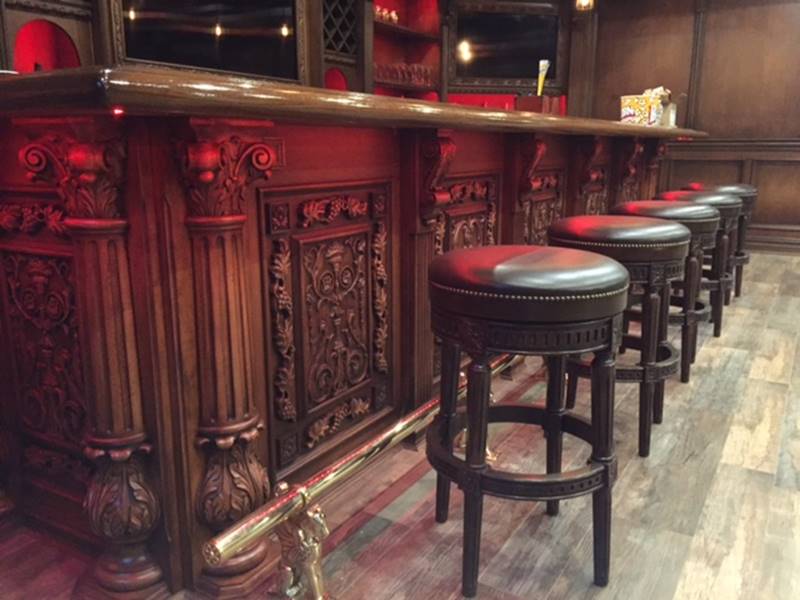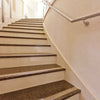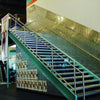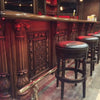Step-by-Step Guide to Installing and Maintaining a Long-Lasting Bar Foot Rail
- by TDI Brass

Bar foot rails, also known as footrests or foot bars, are an important element in any bar, pub, hotel, or restaurant setting. They provide a comfortable place for patrons to rest their feet while seated at the bar and can also serve as a decorative element in the design of the space. In this guide, we'll provide step-by-step instructions on how to install a bar foot rail, as well as tips on how to properly maintain and clean it.
Step 1: Choose the Right Type of Foot Rail
The first step in installing a bar foot rail is to choose the right type for your needs. There are a few different options to choose from, including stainless steel, brass, and or powder coated. Each type has its own unique features and benefits, so consider the decor of your bar and the level of maintenance you're willing to commit to when making your decision.
Step 2: Measure and Mark the Location for the Foot Rail
Once you've chosen the type of bar foot rail you want to install, the next step is to measure and mark the location for it. The bar foot rail should be installed at a height that is comfortable for patrons to rest their feet on while seated at the bar. A general rule of thumb is to install the foot rail at a height of 9-12 inches from the floor.
Step 3: Install the Mounting Brackets
The next step is to install the mounting brackets for the bar foot rail. Determine the locations for the supporting brackets. These brackets will hold the foot rail in place and provide support for it. It is generally recommended to add supporting brackets every three to four feet. In high traffic areas, it may be necessary to add additional support to ensure the stability of the foot rail. Mark the locations for the supporting brackets on the bar or floor using a pencil or marker. The specific installation process will depend on the type of brackets you're using and the type of surface the foot rail will be mounted on. Be sure to follow the instructions carefully to ensure a secure installation.
Step 4: Attach the Foot Rail
Once the mounting brackets are in place, it's time to attach the foot rail. Again, the specific process will depend on the type of foot rail you're using and the mounting brackets you've installed. Be sure to follow the instructions carefully to ensure a secure attachment.
Step 5: Test the Foot Rail
Once the foot rail is installed, be sure to test it to ensure its securely attached and comfortable for patrons to use. If everything checks out, your bar foot rail is ready for use!
Maintaining and Cleaning Your Bar Foot Rail
Proper maintenance and cleaning of your bar foot rail is important to ensure it stays in good condition and continues to serve its intended purpose.
For stainless steel and brass foot rails, it's important to regularly polish them to keep them looking shiny and new.
To maintain the appearance of your foot rail, it's important to clean it regularly to remove any dirt or grime that may have accumulated. Use a soft cloth and a gentle cleaner or polisher specifically designed for these materials. You can also use a mild soap and water solution to gently scrub the rail, dry it thoroughly to prevent any water damage.
Here are some additional points to consider when installing, maintaining, and cleaning a bar foot rail:
Make sure to choose a foot rail that is the appropriate size for your bar. A foot rail that is too long or too short can be uncomfortable for patrons to use and may not serve its intended purpose effectively.
- If you're installing a foot rail on a curved bar, tubing can be bent to fit the shape of the bar. Be sure to follow the instructions carefully if you're working with a curved bar.
- If you notice any damage to your foot rail, it's important to address it as soon as possible. This can help to prevent the damage from worsening and ensure that the foot rail continues to serve its intended purpose effectively.
- If you're installing a foot rail in a high-traffic area, it's a good idea to invest in a durable, corrosion-resistant material like stainless steel or brass. These materials are more resistant to wear and tear and can stand up to heavy use.
- If you're installing a foot rail on a concrete floor, you may need to use concrete anchors to secure the mounting brackets. These anchors can provide added stability and support for the foot rail, especially in high-traffic areas.
- If you're installing a foot rail on a wood floor, it's important to use mounting brackets that are compatible with wood surfaces. Some types of brackets may damage the wood or cause it to rot over time, so be sure to choose a bracket that is specifically designed for wood surfaces.
- If you have a bar with bar-height tables and chairs, you may want to consider installing a foot rail at the base of the tables and chairs. This can provide added comfort for patrons who prefer to rest their feet while seated at a table.
- Regularly inspecting your brass foot rail for any signs of damage or wear and tear can also help to extend its lifespan. If you notice any dents, scratches, or other types of damage, consider having the foot rail repaired or replaced as needed to maintain its appearance and functionality.
- Posted in:
- bar foot rails
- foot bar
- foot rails
- footrest




